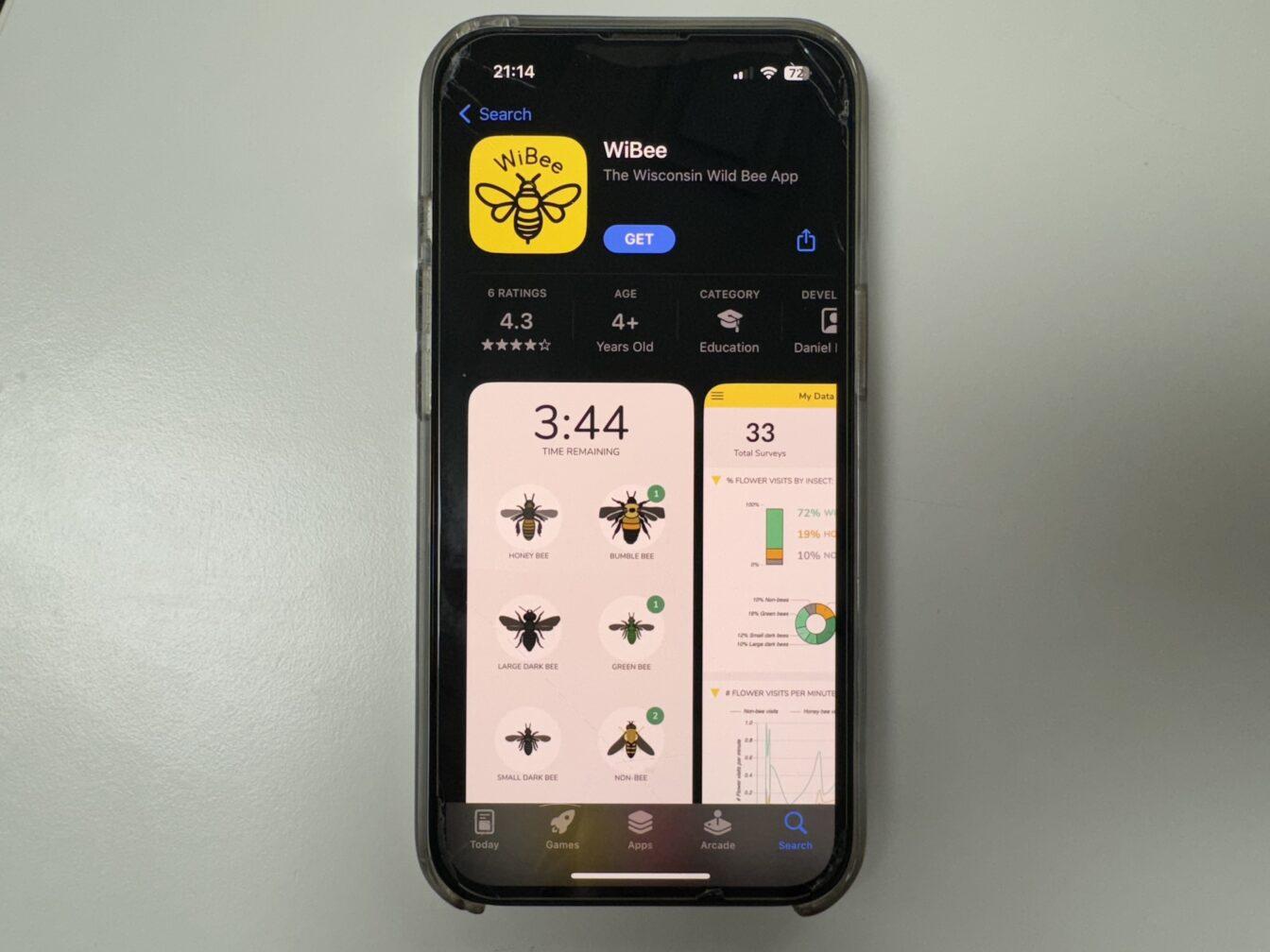The WiBee mobile app, developed by the Gratton Lab, gives everyone a chance to contribute to a robust data set about Wisconsin’s bee pollinators. During the growing season, anyone from master gardeners to backyard growers can contribute to this citizen science project, research scientist with the Gratton lab Hannah Day said in an email statement to The Badger Herald.
According to the WiBee website, the creators developed the app intending to give individualized pollination recommendations to agriculture operations.
The most important task before collecting data is learning to identify the bees. Upon opening the app, the user is greeted by an introduction video, detailing the steps to use the app. The app divides the bees into five categories — honey bee, large dark bee, bumble bee, small dark bee and green bee. There are an additional two categories for other potential pollinators — wasps and flies.
On how to effectively categorize over 100 species of bees, Day said the lab focuses on body size and ease of identification, which roughly translates to functional diversity. For example, bumblebees should be relatively easy to identify due to their unique appearance.
After studying the bees, the app gives a quiz based on the information. Once the user passes the quiz, the app allows the first scan to begin, according to the WiBee website.
Step one is to identify the plant. The app asks for identifying information such as if the plant is a crop or non-crop plant, cloud cover and shadow visibility. This helps determine whether or not the conditions are right for pollinators to come out, according to the WiBee website.
After it qualifies the conditions, the survey begins and tasks the observer with pushing the corresponding category of pollinator when seen. According to the WiBee website, the survey ends after five minutes of observation. The user can also see a record of their observations, including flower visits and a breakdown of insects per flower.
Data from the WiBee dashboard becomes part of a larger database where data for specific crops can be viewed, according to the WiBee website. Annually, the WiBee team outputs data summaries.
The lab primarily receives data from master gardeners and other interested individuals, Day said. These groups are part of ongoing initiatives that ask for more specific information to help in the Gratton lab’s goal of giving specific management recommendations for the plants.
According to Day, the initiatives existed before the lab formed the app. This serves to bolster community support and increases routine engagement. The creators of the WiBee app hope it’s around for years to come and fulfills its goal of helping the bee population and crop health of Wisconsin flourish.



